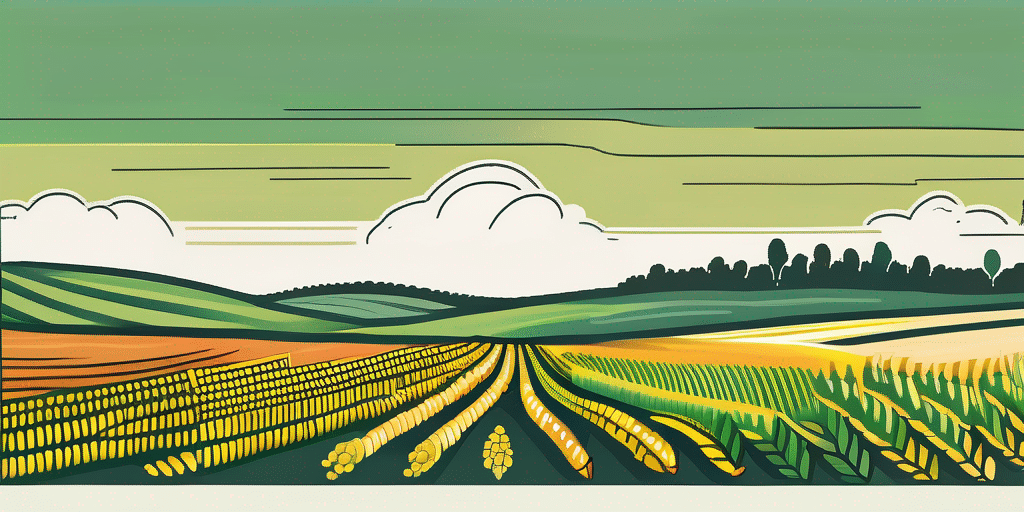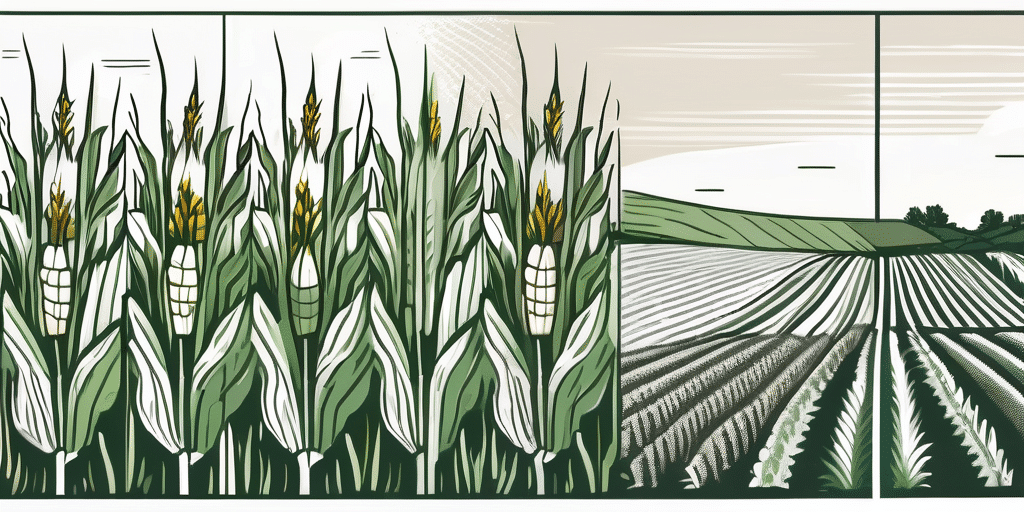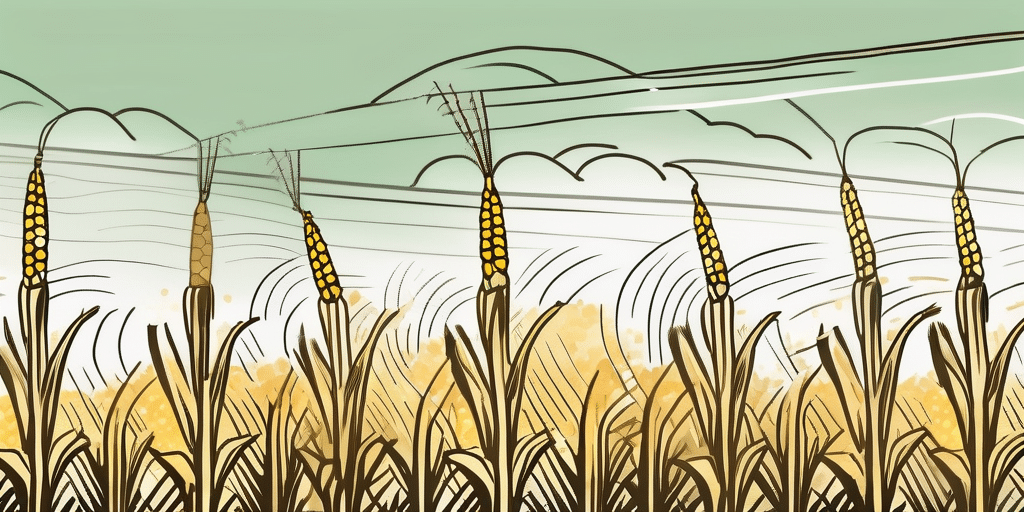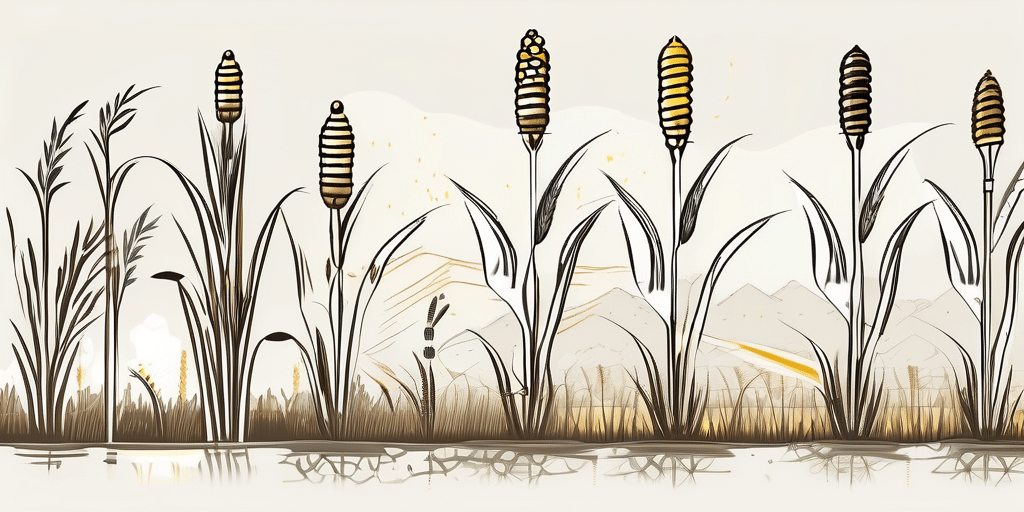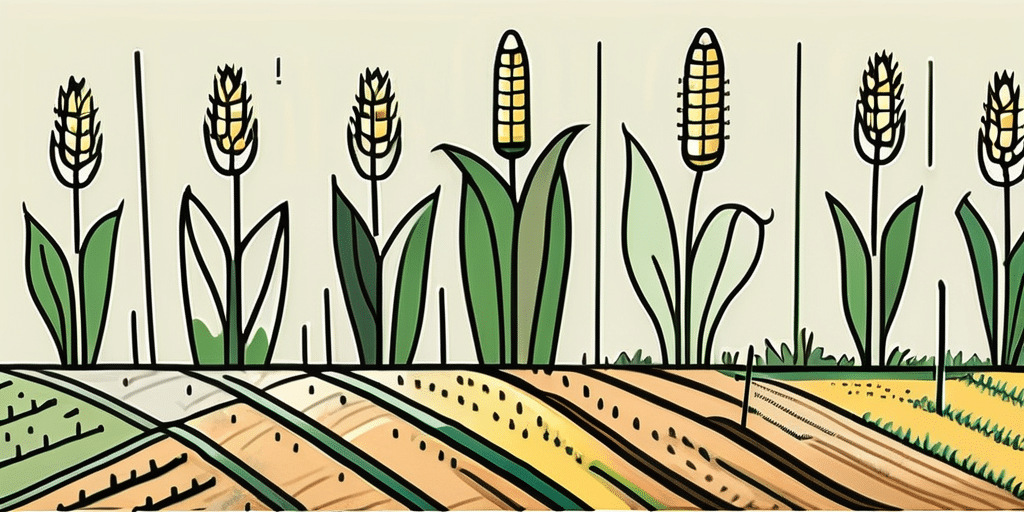Ruby Queen corn is a delicious and beautiful variety of sweet corn that can be grown in your own garden. With its vibrant red kernels and sweet flavor, it will surely be a favorite in your summer meals. In this article, we will guide you through the process of growing Ruby Queen corn from start to finish.
When to Start Ruby Queen Corn
The first step in growing Ruby Queen corn is knowing when to start. Ruby Queen corn is a warm-season crop that needs plenty of sunlight and warm temperatures to thrive. It should be planted after the last frost date in your area when the soil has warmed up to at least 60°F (15°C).
Before planting Ruby Queen corn, it’s important to prepare the soil properly. Corn is a heavy feeder and requires nutrient-rich soil to produce healthy, flavorful ears. Start by tilling the soil to a depth of at least 8 inches to loosen it and improve drainage. Incorporating organic matter, such as compost or well-rotted manure, can help enrich the soil and provide essential nutrients for the corn plants.
When planting Ruby Queen corn, spacing is crucial for optimal growth and yield. Plant the seeds in rows that are at least 30 inches apart to allow room for the plants to develop fully. Within the rows, space the seeds about 8-12 inches apart. Planting corn in blocks rather than single rows can help with pollination, as corn is wind-pollinated and having multiple plants close together increases the chances of successful pollination.
How to Grow Ruby Queen Corn From Seed
To grow Ruby Queen corn from seed, follow these steps:
- Select a sunny location in your garden with well-draining soil.
- Prepare the soil by removing any weeds and loosening it with a garden fork or tiller.
- Sow the corn seeds directly into the soil, planting them at a depth of 1-2 inches (2.5-5 cm) and spacing them 9-12 inches (23-30 cm) apart.
- Cover the seeds with soil and gently press down to ensure good seed-to-soil contact.
- Water the area thoroughly after planting to help the seeds germinate.
Expanding on the process of growing Ruby Queen corn, it’s important to note that this particular variety is known for its vibrant red kernels and exceptional sweetness. Ruby Queen corn is a popular choice among home gardeners due to its delicious flavor and attractive appearance. When selecting a sunny location for your corn, consider choosing a spot that receives at least 6-8 hours of sunlight per day to ensure optimal growth and development.In addition to planting the seeds at the recommended depth and spacing, it’s beneficial to enrich the soil with compost or organic fertilizer before sowing. This will provide the corn plants with essential nutrients for healthy growth. As the corn seedlings begin to emerge, it’s essential to monitor their progress and provide consistent watering to support their development. Maintaining even soil moisture is key to preventing stress on the plants and ensuring a successful harvest of Ruby Queen corn.
How and When to Transplant Ruby Queen Corn
If you prefer to start your Ruby Queen corn indoors before transplanting, here’s how:
Transplanting Ruby Queen corn can be a rewarding experience for gardeners looking to cultivate this vibrant and delicious variety. By starting the corn seeds indoors, you can get a head start on the growing season and ensure a healthy and robust crop.
- Sow the corn seeds in biodegradable pots filled with seed-starting mix, about 2-3 weeks before the last frost date.
- Place the pots in a warm location, such as a greenhouse or sunny windowsill.
- Keep the soil moist but not waterlogged, and provide adequate light for the seedlings to grow.
- Transplant the seedlings outdoors when they are about 4-6 inches (10-15 cm) tall, after the last frost date.
- Choose a sunny spot in your garden and space the seedlings 9-12 inches (23-30 cm) apart.
- Water the seedlings thoroughly after transplanting to help them establish.
When selecting a location for transplanting Ruby Queen corn, it’s essential to choose a spot that receives full sun for optimal growth. Corn plants thrive in sunlight and require at least 6-8 hours of direct sunlight daily to develop strong stalks and produce abundant ears.
How to Plant Ruby Queen Corn – Spacing and Patterns
When planting Ruby Queen corn, it’s important to give each plant enough space to grow and ensure proper pollination. Follow these guidelines:
- Plant corn in blocks or multiple rows instead of a single long row, as this promotes better pollination.
- Space the plants 9-12 inches (23-30 cm) apart within the rows.
- Leave at least 24-36 inches (61-91 cm) between the rows to allow for adequate sunlight and airflow.
Proper spacing and planting patterns are crucial for the successful growth of Ruby Queen corn. By planting in blocks or multiple rows, you create a more conducive environment for pollination. This method increases the chances of each silk getting fertilized, resulting in fuller ears of corn with more consistent kernels.
When spacing the plants within the rows, it’s essential to consider the mature size of Ruby Queen corn. This variety can grow tall and produce large ears, so giving each plant ample room to develop ensures they receive enough nutrients and sunlight. Additionally, maintaining proper spacing helps prevent overcrowding, which can lead to competition for resources and hinder the overall growth of the crop.
How Long to Grow Ruby Queen Corn
Ruby Queen corn takes about 75-90 days to reach maturity and is typically ready to harvest when the silks turn brown and the kernels are plump and milky.
When planting Ruby Queen corn, it is essential to ensure that the soil temperature is consistently above 60°F for optimal germination. This variety of corn thrives in well-drained soil with a pH level between 6.0 and 6.8. It is recommended to plant the seeds in blocks rather than rows to encourage proper pollination, as corn is wind-pollinated.
Throughout the growing season, it is crucial to provide adequate water to the Ruby Queen corn plants, especially during the tasseling and silking stages. Mulching around the base of the plants can help retain soil moisture and suppress weed growth. Additionally, applying a balanced fertilizer when the plants are knee-high can promote healthy growth and development.
How to Water Ruby Queen Corn
Proper watering is crucial for the success of your Ruby Queen corn crop. Here are some guidelines:
- Water your corn plants deeply and regularly, providing about 1 inch (2.5 cm) of water per week.
- Focus on delivering water directly to the root zone, as overhead watering may lead to disease problems.
- Consider using a soaker hose or drip irrigation system to ensure even and efficient watering.
It’s important to monitor the soil moisture levels around your Ruby Queen corn plants to avoid overwatering, which can lead to root rot. One way to check if your plants need water is to stick your finger into the soil near the base of the plants. If the soil feels dry to a depth of about 2 inches (5 cm), it’s time to water.
During hot and dry periods, your corn plants may require more frequent watering to thrive. Mulching around the base of the plants can help retain soil moisture and reduce the frequency of watering. Organic mulches like straw or shredded leaves not only conserve moisture but also add nutrients to the soil as they break down over time, benefiting the growth of your Ruby Queen corn.
How to Fertilize Ruby Queen Corn
Proper fertilization is essential for healthy Ruby Queen corn plants. Here’s what you need to know:
Ruby Queen corn, a popular sweet corn variety known for its exceptional taste and vibrant red kernels, thrives in nutrient-rich soil. To ensure your Ruby Queen corn plants reach their full potential, it’s crucial to provide them with the right fertilization regimen.
- Before planting, amend the soil with well-decomposed compost or aged manure to provide a nutrient-rich growing environment. This initial step sets the foundation for healthy growth and robust corn production.
- Apply a balanced organic fertilizer, such as a 10-10-10 formulation, when the corn plants are knee-high (about 12-18 inches or 30-46 cm tall). This mid-season application replenishes essential nutrients in the soil, supporting vigorous stalk development and ear formation.
- Side-dress the plants with nitrogen fertilizer when the silks appear, following the package instructions for application rates. Nitrogen is crucial for promoting lush foliage and aiding in the development of plump, juicy kernels on each ear of Ruby Queen corn.
As the corn plants continue to grow and mature, regular monitoring of their nutrient needs is key to ensuring a bountiful harvest. Consider conducting soil tests throughout the growing season to adjust your fertilization schedule accordingly. By providing the right balance of nutrients at each stage of growth, you can enjoy a plentiful yield of delicious Ruby Queen corn to savor with family and friends.
Sunlight Requirements for Ruby Queen Corn
Ruby Queen corn, a beautiful and delicious variety known for its deep red kernels, is a sun-loving plant that thrives in full sunlight. When planning the location for your Ruby Queen corn patch, it is essential to choose a spot that receives ample sunshine. Aim to provide your corn plants with at least 6-8 hours of direct sunlight per day to ensure optimal growth and productivity.
In addition to sunlight, Ruby Queen corn also benefits from well-draining soil rich in organic matter. This type of soil allows the corn’s roots to access essential nutrients and water while preventing waterlogged conditions that can lead to root rot. Consider amending your soil with compost or aged manure before planting to create a fertile growing environment for your Ruby Queen corn.
Soil Requirements for Ruby Queen Corn
Ruby Queen corn, a popular sweet corn variety known for its vibrant red kernels, thrives in specific soil conditions that support its growth and development. In addition to requiring well-draining soil rich in organic matter, this corn variety also benefits from certain soil amendments and practices to ensure a bountiful harvest.
When preparing the soil for Ruby Queen corn, it is essential to conduct a thorough analysis of the soil composition to understand its pH level and nutrient content. This step is crucial in determining the specific needs of the corn plants and making informed decisions about soil amendments.
- Test your soil before planting to determine its pH level and nutrient content.
- Adjust the soil pH to around 6.0-6.8, as corn performs best in slightly acidic to neutral soil.
- Incorporate compost or well-rotted manure into the soil to improve its fertility and moisture retention.
Furthermore, in addition to incorporating compost or well-rotted manure into the soil, gardeners can also consider using organic fertilizers to provide essential nutrients for the Ruby Queen corn plants. These fertilizers can help supplement the soil’s existing nutrient levels and promote healthy growth throughout the growing season.
How to Grow Ruby Queen Corn Outdoors
Ruby Queen corn is typically grown outdoors in garden beds. Here are some additional tips for growing it successfully:
- Choose a location with good air circulation to minimize the risk of fungal diseases.
- Consider planting cold-hardy cover crops, such as winter rye or clover, in the fall to improve soil health and prevent erosion.
- Monitor the plants regularly for pests and diseases and take appropriate action if necessary.
How to Grow Ruby Queen Corn Indoors
If you live in a region with a short growing season or limited garden space, you can successfully grow Ruby Queen corn indoors. Here’s how:
- Choose a large container with drainage holes that is at least 12 inches (30 cm) deep.
- Fill the container with a well-draining potting mix and moisten it before planting.
- Plant one corn seed in the center of the container, burying it about 1-2 inches (2.5-5 cm) deep.
- Place the container in a sunny location, such as a south-facing window or under grow lights.
- Water the corn regularly, keeping the soil evenly moist but not waterlogged.
How to Grow Ruby Queen Corn In Containers and Pots
Growing Ruby Queen corn in containers or pots is a convenient option for small spaces. Follow these guidelines:
- Choose a large container or pot that is at least 15 gallons (57 liters) in volume to provide ample growing space for the corn plants.
- Fill the container with a well-draining potting mix enriched with compost.
- Plant 2-3 corn seeds in each container, spacing them evenly.
- Water the corn regularly, making sure the soil stays evenly moist but not waterlogged.
- Place the container in a sunny location, such as a patio or balcony, where it will receive at least 6-8 hours of direct sunlight daily.
Ruby Queen Corn Companion Plants – What to Plant With & Not Plant With Ruby Queen Corn
Companion planting can help improve the growth and health of your Ruby Queen corn. Here are some compatible and incompatible plants:
Good companions:
- Beans
- Squash
- Cucumbers
Avoid planting these with Ruby Queen corn:
- Tomatoes
- Peppers
- Brassicas (cabbage, broccoli, cauliflower)
Common Ruby Queen Corn Pests and Diseases
While Ruby Queen corn is relatively resistant to many common pests and diseases, it can still be affected. Keep an eye out for the following:
Pests:
- Corn earworms
- Armyworms
- Corn borers
Diseases:
- Common rust
- Southern corn leaf blight
- Stalk rot
How & When to Harvest Ruby Queen Corn
Knowing when and how to harvest Ruby Queen corn is crucial to ensure optimal flavor and tenderness. Follow these guidelines:
- Check the ears of corn regularly for signs of maturity, such as fully formed kernels and dried brown silks.
- When the ears are mature, firmly grasp the ear near the base and gently pull downward until it detaches from the stalk.
- Peel back a small portion of the husk to check the kernels. They should be plump, juicy, and milky.
How to Store & Preserve Ruby Queen Corn
If you have more Ruby Queen corn than you can eat right away, here’s how to store and preserve it:
- Leave the husks on the ears to protect the kernels.
- Refrigerate the corn immediately after harvest, keeping it as cool as possible without freezing.
- Plan to consume the corn within 2-3 days for the best flavor.
Frequently Asked Questions
Q: How large do Ruby Queen corn plants grow?
A: Ruby Queen corn plants can grow to a height of 6-8 feet (1.8-2.4 meters) under optimal growing conditions.
Q: Can I save seeds from Ruby Queen corn for future planting?
A: Yes, you can save seeds from Ruby Queen corn. Allow the ears to fully mature on the stalk, then remove them and air-dry them in a warm, well-ventilated area. Store the dried ears in a cool, dry place until planting season.
Q: Can I grow Ruby Queen corn without fertilizer?
A: While Ruby Queen corn will grow without additional fertilization if the soil is rich in organic matter, applying a balanced organic fertilizer can help ensure vigorous growth and good harvests.
Now that you have all the information you need, it’s time to start growing your own delicious Ruby Queen corn. Enjoy the experience and savor the flavors of this beautiful corn variety in your summer meals!
Join the How to Grow Everything Community
Ready to transform your garden into a vibrant oasis brimming with Ruby Queen corn and more? Subscribe for free to How to Grow Everything and start building the garden of your dreams today! Receive personalized gardening advice tailored to your location, grow zone, and experience level. Enjoy exclusive gardening tips, special offers, and the best deals delivered straight to your inbox. With our family’s commitment to providing quality content, you’ll get everything you need to become a gardening expert – 100% free. Become part of our growing community and let’s cultivate a greener world together!

